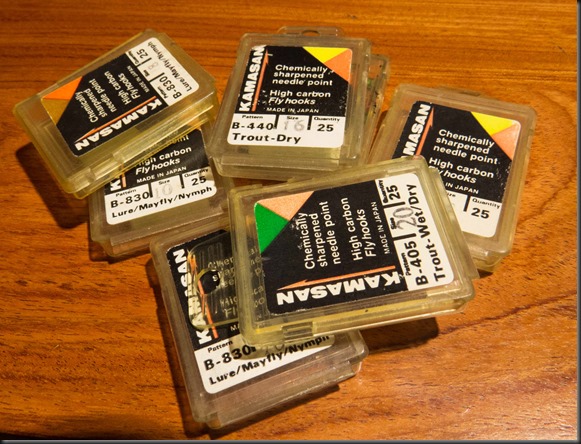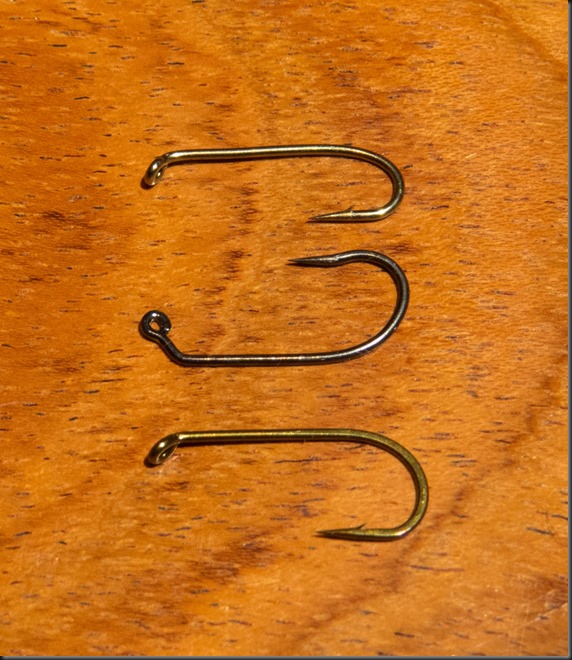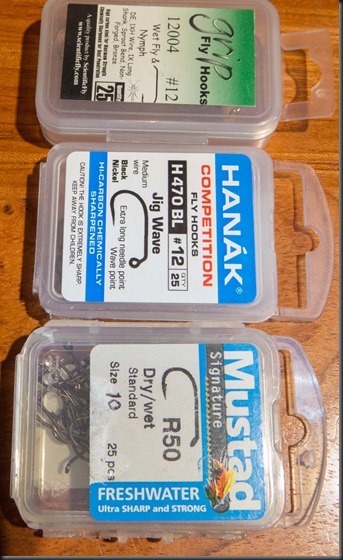TTP (2)
Tips, Theories & Pointers
Back in the day, nymph hooks were quite the thing: we started getting hooks that had a longer shank to accommodate the nymph patterns we were all tying, and I for one, went crazy on them.

Our human aesthetics (and tunnel vision on the matter) dictated that a nice long hook fitted with the nymph shape.
But nowadays it seems to have gone full circle, and for good reason I think.
Take a look at these: the shank lengths are about the same (so we can tie the same nymph on them right?). But look at the gape of the top hook (old style nymph hook) vs the bottom two hooks …the middle (modern) hook in particular:

Here are the hook models by the way:

The sizes are somewhat irrelevant aren’t they! Just pick how long you want your nymph to be, and then tie it on a hook with a nice big fish catching gape. Many times, you will find you are tying what you see as a #12, on a hook of say #10. I say it doesn’t matter.
Note: a TTP topic still to come: Tying your materials offset so as not to block that gape….and the release this week by BIDOZ of their offset beads will no doubt feature in this upcoming topic.
5 Responses
The Hanak hooks still don’t have a very good gap. Check out knapek hooks. They are Czech made and much sexier.
sexy hooks sound good 🙂 …yes of course….we do know the Knapek here in SA. I agree…wonderful hooks. But if you are anything like me you have hoarded hooks for years and now you feel you have to work through the old stock first. Or maybe your wife says you have to do that before you spend another cent on hooks!
I guess I’m lucky that my wife ties more than I do. But I agree that I do have a stock of hooks that will probably never see the light of day.
Thinking about hooks is a good thing, something many anglers don’t do enough of. Years back I ditched all those lovely looking up eyed dry fly hooks, because unless you use a Turle Knot the angle of attack on the strike is all wrong and we lost loads of fish. But I am quite happy with the “Standard Nymph” hooks for many of my patterns and I can’t honestly say that I have lost fish because of one design or another. I don’t like these fancy “swimming nymph hooks” and such because again the mathematics of the strike angles don’t make sense, and we did test some incurved Dohiko hooks which were very poor in terms of hooks ups when used on dry flies, but perfectly fine as nymphs.. Perhaps to me the most important point of the lot is that hooks should be sharpened with a quality hook hone. I sharpen every fly that I tie onto the leader, always, and am convinced that this is more important than much of the other stuff we like to ponder, that and the fact that barbs on fly hooks impede the hook up rather than the other way around and as such I don’t use barbed hooks for any of the fishing that I do.